 |
 |
 |
| |
HIV Incidence Low, Despite High STI Rate, in US MSM in Big PrEP Demo Project
|
| |
| |
IAS 2015, July 19-22, 2015, Vancouver
"Two participants became infected with HIV during the study for an incidence of 0.43 per 100 person-years (95% CI 0.05 to 1.54). That incidence is much lower than rates in the placebo arm of the Ipergay study or the deferred arm of the PROUD study, both of which tested TDF/FTC in MSM."
Mark Mascolini
HIV incidence (the new-infection rate) lay well below 1 case per 100 person-years in a large tenofovir/emtricitabine (TDF/FTC) PrEP demonstration project enrolling more than 500 men who have sex with men (MSM) and transgender women (TGW) in three US cities [1]. A persistently high incidence of sexually transmitted infections (STIs) showed that these men and women continued having sex during the 12-month study.
As preexposure prophylaxis (PrEP) uptake rises in the community, understanding efficacy, adherence, and sex behaviors in PrEP users becomes essential to improving use of this strategy. The Demo Project aimed to address those issues in an open-label study that recruited MSM and TGW at clinics in three cities, San Francisco, Miami, and Washington, DC, where participants numbered 300, 157, and 100 respectively. The annual HIV infection rate in MSM across the three clinics exceeds 2%.
Enrollment occurred between October 2012 and January 2014. All participants had creatinine clearance at or above 60 mL/min and no one had a serious medical condition. Health workers offered participants up to 48 weeks of free TDF/FTC PrEP and scheduled follow-up visits at 1, 3, 6, 9, and 12 months for HIV and STI testing. Researchers measured adherence by self-report, medication possession ratio, and dried-blood spot levels of tenofovir-diphosphate (TFV-DP). Based on previous research, the investigators determined TFV-DP concentrations equivalent to 4 or more doses per week, 2 to 3 doses per week, under 2 doses per week, and no recent dosing.
Study participants had a median age of 35, and 20% were younger than 25. While 48% were white, 35% were Latino, and 7% black. Fewer than 2% were TGW. Most (85%) had at least some college, and 74% used any recreational drug. Participants reported an average 11 anal sex partners in the past 3 months, and two thirds reported condomless receptive anal sex in the past 3 months. One quarter had an HIV-positive partner and one quarter had an STI when entering the study.
Most participants returned for study visits at 1 month (93%), 3 months (88%), 6 months (85%), 9 months (80%), and 12 months (78%). Participants who knew about PrEP before the study and those who reported receptive anal sex without condoms at enrollment had higher retention rates.
Just under 90% of participants reported good or excellent adherence at every visit. Dried-blood spot analysis determined that 80% or more MSM and TGW had TFV-DP levels consistent with protection from HIV at weeks 4, 12, 24, 36, and 48. Almost two thirds of participants (63%) had protective levels at all their study visits, while 3% had levels indicating fewer than 2 doses weekly at every visit.
Two factors approximately doubled chances of protective dried-blood spot TFV-DP levels: renting of owning housing (adjusted odds ratio [aOR] 2.02, 95% confidence interval [CI] 1.14 to 3.55, P = 0.02) and reporting 2 or more condomless anal sex partners in the past 3 months (aOR 1.82, 95% CI 1.14 to 2.89, P = 0.01). Two factors independently lowered odds of protective TFV-DP levels: participating at the Miami site (aOR 0.32, 95% CI 0.17 to 0.60, P < 0.001) and being black versus white (aOR 0.28, 95% CI 0.12 to 0.64, P = 0.003).
Average number of anal sex partners fell significantly from 10.9 at screening to 9.3 at week 48 (P = 0.04). But the average number of condom-free receptive anal sex acts did not change during the study. STI rates remained stable throughout the study at an incidence of 90 per 100 person-years (meaning 90 of every 100 participants got at STI during the study year).
Two participants became infected with HIV during the study for an incidence of 0.43 per 100 person-years (95% CI 0.05 to 1.54). That incidence is much lower than rates in the placebo arm of the Ipergay study or the deferred arm of the PROUD study, both of which tested TDF/FTC in MSM. Of the two men who picked up HIV in The Demo Project, one reported taking a last PrEP dose more than 1 month before getting infected. The second newly infected person seroconverted 4 weeks after the week-48 visit and had undetectable TFV-DP levels after week 4.
Thirteen people (2.3%) had 23 creatinine elevations, one grade 2 and the rest grade 1. Twelve participants broke a bone during the study; all but one fracture involved trauma, and none were judged related to TDF/FTC. Nineteen serious adverse events were judged not related to TDF/FTC.
The PrEP Demo Project team concluded that low HIV incidence despite the persistently high STI rate "provides strong support for the scale-up of PrEP in these clinical settings." They recommended quarterly STI screening for MSM using PrEP, including testing at extragenital sites. They noted that the study is limited by underrepresentation of blacks and transgender persons.
Reference
1. Liu A, Cohen S, Vittinghoff E, et al. Adherence, sexual behavior and HIV/STI incidence among men who have sex with men (MSM) and transgender women (TGW) in the US PrEP demonstration (Demo) project. IAS 2015. 8th Conference on HIV Pathogenesis, Treatment and Prevention. July 19-22, 2015. Vancouver. Abstract TUAC0202.
-----------------------------------
Reported by Jules Levin, NATAP
Adherence, Sexual Behavior and HIV/STI Incidence Among MSM and Transgender Women in the US PrEP Demo Project
A Liu, S Cohen, E Vittinghoff, P Anderson, S Doblecki-Lewis, O Bacon, W Chege, R Elion, S Buchbinder, M Kolber
8th IAS Conference on HIV Pathogenesis, Treatment, and Prevention, Vancouver, Canada




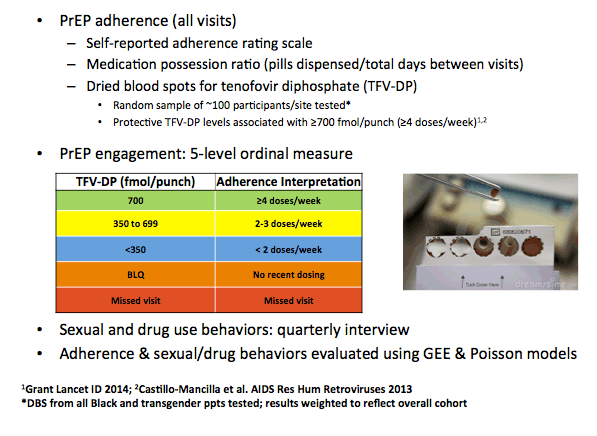

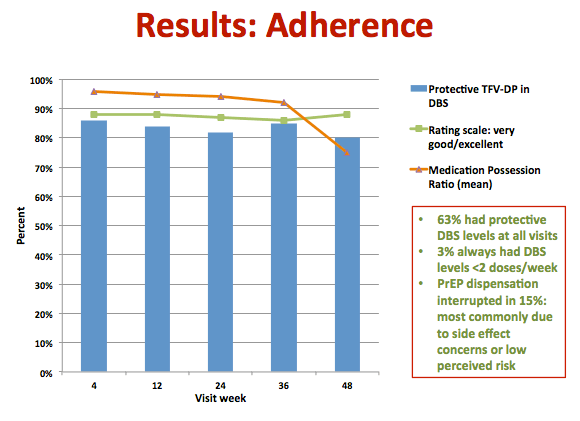

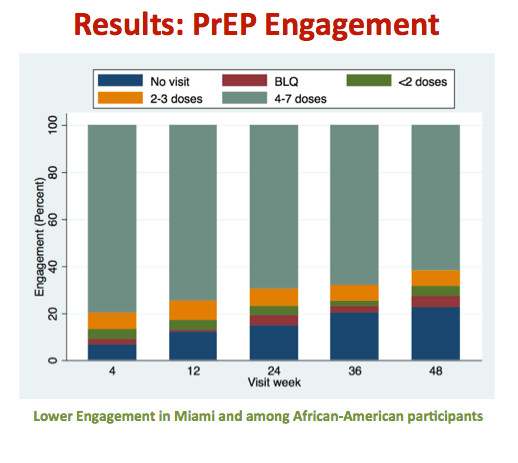
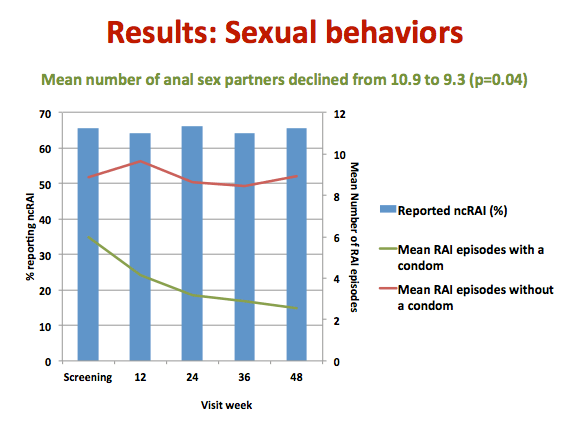
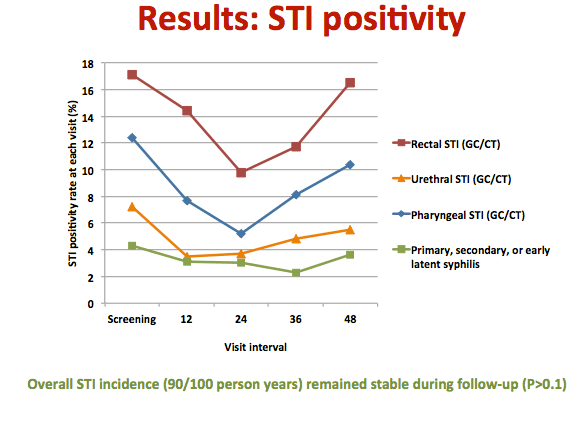
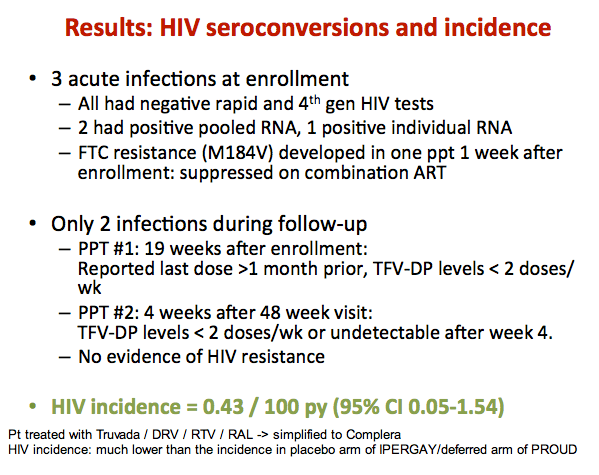


|
| |
|
 |
 |
|
|